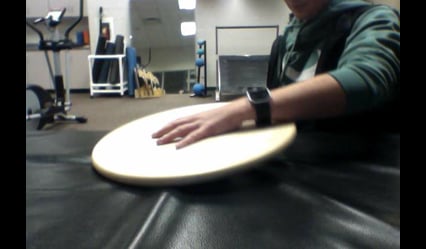Indications for AROM
- Patient able to voluntarily contract, control, and coordinate muscle(s)
- No contraindications (cleared medically, surgically, functionally)
- Benefits desirable for fulfilling patient's goals
Benefits of AROM
- Maintaining physiologic elasticity, strength, and contractile endurance of muscle
- Increasing local circulation
- Increasing sensory awareness
- Preventing complications in the cardiovascular system
- ankle pumps are an example of an AROM exercise commonly used to prevent blood clots (thrombus) in the lower extremities due to deconditioning or a post-operative state (video less than one minute)
- Maintaining structural integrity
- Improving muscle strength
- strength is enhanced through AROM when the patient has difficulty moving the affected limb against gravity
Considerations for AAROM
- Requires patient to actively contract muscle(s)
- Requires external assistance (manual, mechanical and/or gravitational forces)
- Requires modifying amount of assistance in response to patient's ability to move through the range
- Requires that the caregiver follow previously discussed techniques
Here is an example of how someone may use a device, such as a wobble board, to help a patient with AAROM at the wrist. As the patient moves the wrist, the board will tip in the direction of the movement, assisting increase motion. Note how the patient will need to activate the wrist first to get the board to "wobble" in multiple directions.

https://www.hep2go.com/exercise_editor.php?exId=53598&userRef=gciaake

